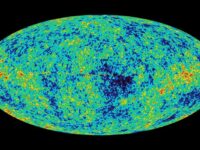Even among the myriad of mysterious, awe-inspiring objects in our universe, pulsars deserve special recognition. As one of the densest objects and most powerful magnets known to man, the pulsar is one of nature’s most extreme creations. The husks of dead stars — the fastest of which can spin over 700 times per second, pulsars emit concentrated beams of electromagnetic radiation, which from our vantage on Earth, appear to pulse at regular intervals.
If the Sun were made of neutron star material, it would weigh almost 250 times the rest of the galaxy combined!
Pulsars are a rapidly-spinning variant of neutron stars — the cores of supernovae not quite massive enough to become black holes. Their rotational periods range from 1 millisecond to 15 seconds, with most falling between 0.3 and 3 seconds. They are typically around 1.5 solar masses, with radii close to 10 kilometers, making them the densest objects in the universe after black holes. If the sun were made of neutron star material, it would weigh almost 250 times the rest of the galaxy combined!
Neutron stars are formed by the collapse of massive stars, typically those of eight solar masses or more. At the end of their life, these massive stars explode outwards in a supernova. The leftover core rapidly shrinks, with the extreme conditions crushing protons and electrons together into neutrons (hence the name “neutron star”). Angular momentum is conserved in this process, but the extreme decrease in diameter from millions of kilometers to between 20 and 24 km makes rotational speed increase dramatically. When the spin is fast enough and the magnetic field strong enough, neutron stars radiate as pulsars.
The magnetic field surrounding the strongest pulsars can exceed 1013 Gauss — over 10 trillion times that of Earth’s.
The magnetic field surrounding the strongest pulsars can exceed 1013 Gauss — over 10 trillion times that of Earth’s. Charged particles are accelerated along the magnetic poles to relativistic speeds, generating electromagnetic radiation in the form of radio waves, X-rays, or gamma rays. When the magnetic field is not aligned with the axis of rotation, the magnetic poles whip around the star like the beam of light from a lighthouse. To an observer on Earth, the emissions appear as brief pulses of radiation, from which pulsars get their names.
From confirming predictions of General Relativity to being the most accurate natural clocks in the universe, pulsars have proven to be incredibly valuable to astronomers. Their continued discovery and research will no doubt create both questions and answers that help to unveil the hidden nature of our universe.
Science (2004). DOI: 10.1126/science.1090720
Physics Reports (1991). DOI: 10.1016/0370-1573(91)90064-S
Journal of Physics: Conference Series (2017). DOI: 10.1088/1742-6596/932/1/012002





